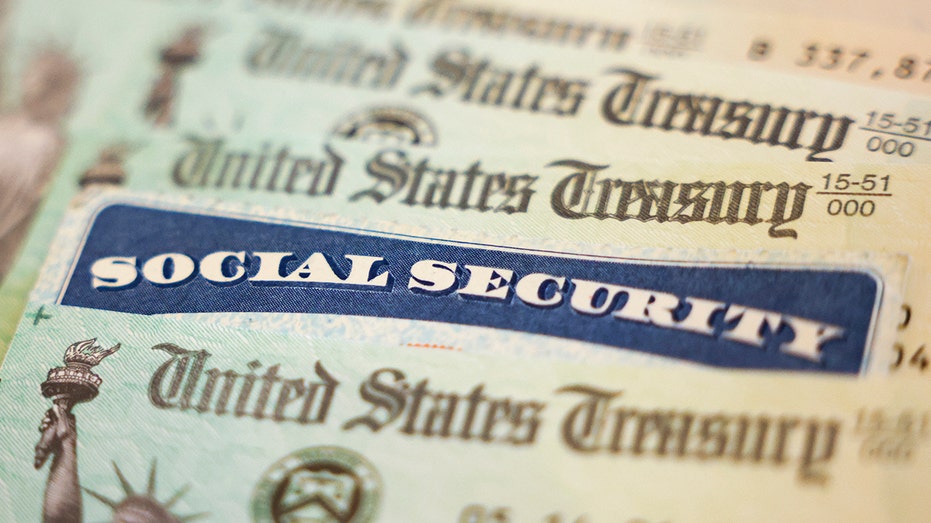Record-high Social Security cost-of-living increase poised to kick in soon
Over 66M Americans set to receive record-high COLA increase in 2023
Economic expert encourages you 'wait' to redeem Social Security benefits
Barron's managing editor Kristen Bellstrom reacts to younger generations preparing for the prospect of less Social Security benefits.
Social Security recipients will soon receive the biggest bump to their benefits more than four decades, with the pension program poised to increase by 8.7% in 2023.
The increase, known as a cost-of-living adjustment (COLA), is the largest since 1981, when recipients saw an 11.2% jump. It will increase the average monthly benefit by about $140.
More than 66 million Americans collecting Social Security will receive the bigger payments beginning in January, according to the Social Security Administration.
The higher payments came in response to the hottest inflation in four decades: Prices paid by U.S. consumers hovered around a four-decade high from August through October, the time period in which the COLA is calculated.
IRS DELAYS NEW TAX-REPORTING RULE ON VENMO, PAYPAL PAYMENTS OVER $600

More than 64 million Americans collecting Social Security will receive the bigger payments beginning in January. (Kevin Dietsch/Getty Images / Getty Images)
"A Social Security cost-of-living-adjustment of 8.7% is rare — enjoy it now," said Mary Johnson, a policy analyst at the Senior Citizens League. "This may be the first and possibly the last time that beneficiaries today receive a COLA this high."
Still, the decades-high benefit increase is not always good news for recipients, according to Johnson.
Higher Social Security payments are a bit of a Catch-22. They can reduce eligibility for low-income safety net programs like food stamps and can push people into higher tax brackets. More significant payments, essentially, do not necessarily result in more money in people's pockets.
Social Security benefits become taxable when half the benefit amount, plus all of your other income, including tax-exempt interest, exceeds $25,000 if you are single, head of household, or qualifying widow(er) or $32,000 if you're married filing jointly.
STILL MISSING YOUR TAX REFUND? THE IRS WILL SOON PAY YOU 7% INTEREST
Some seniors may never have owed taxes on their benefits, but that's likely to change next year when they file their tax returns. In fact, the Congressional Budget Office has estimated the share of Social Security benefits subject to tax could grow by 10% this year and another 10% in 2023. In all, total income taxes paid on that money is projected to climb by 37% this year.
On top of that, the Social Security trust fund is estimated to receive more than $45 billion from taxing benefits in 2022 — a major increase from 2021, when it raked in about $34.5 billion, according to the program's trustees.
"There can be some very long-term effects to high inflation COLAs," Johnson said. "It's like a no-win situation."
IRS SAYS YOUR TAX REFUND COULD BE SMALLER IN 2023 – HERE'S WHY
Higher monthly income can also reduce seniors' eligibility for low-income programs like SNAP, the Supplemental Nutrition Assistance Program (food stamps).
Benefit in 2022 jumped by 5.9%, which amounted to an average monthly increase of $92 for retired Americans, bringing the total amount to $1,657, the Social Security Administration announced last year.

Shoppers inside a grocery store in San Francisco, Calif., May 2, 2022. (Photographer: David Paul Morris/Bloomberg via Getty Images / Getty Images)
Soaring inflation has already eroded the entirety of the increase, however, with recipients losing 46% of their buying power — or about $508 — every month for the year, according to calculations by the Senior Citizens League.
What's more, the unusually large COLA could move the Social Security insolvency date forward by more quickly depleting the funds.
The average monthly benefit would have to increase by $417.60 for retirees to maintain the same level of purchasing power as in 2000.
CLICK HERE TO READ MORE ON FOX BUSINESS
Americans preparing for retirement should get out of target date funds: Nicole Webb
Wealth Enhancement Group senior vice president Nicole Webb provides insight on building a retirement fund on 'Making Money.'






















